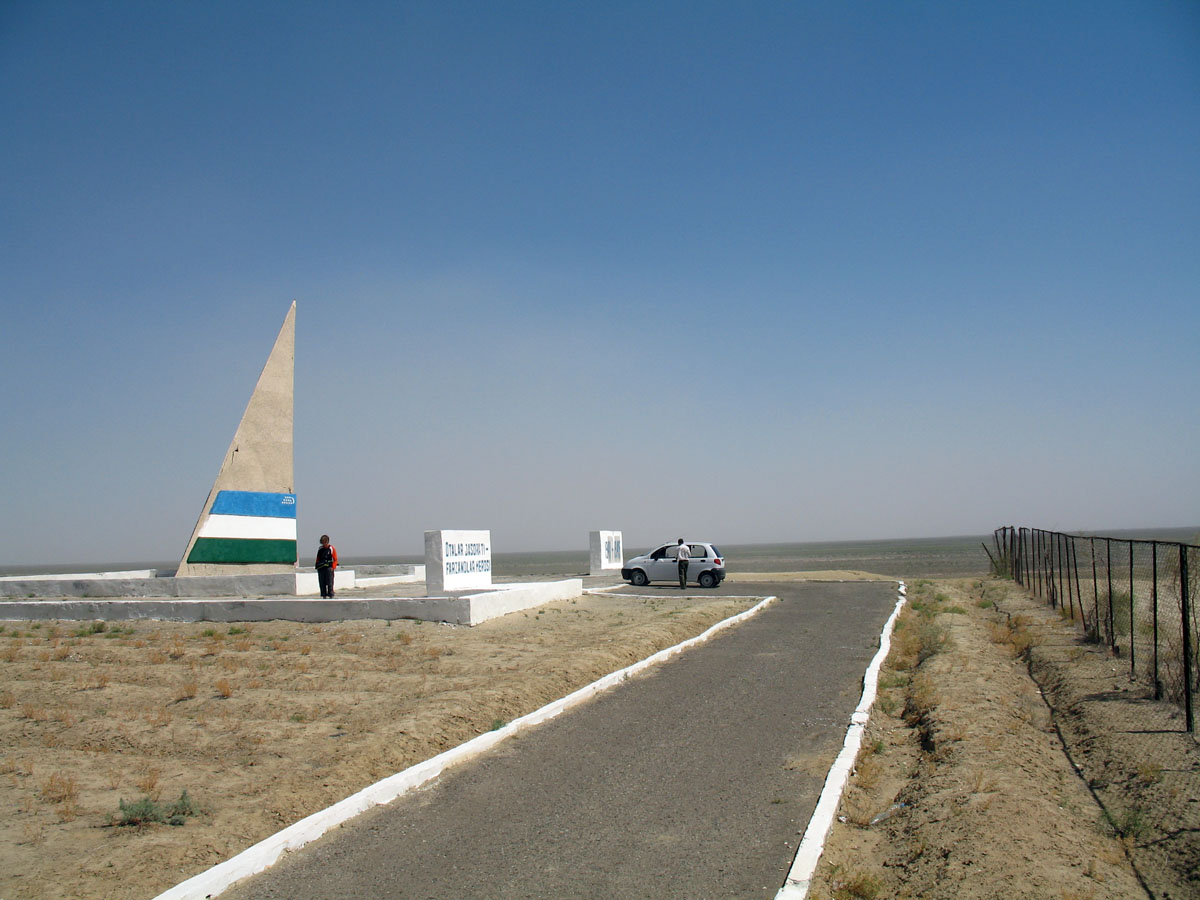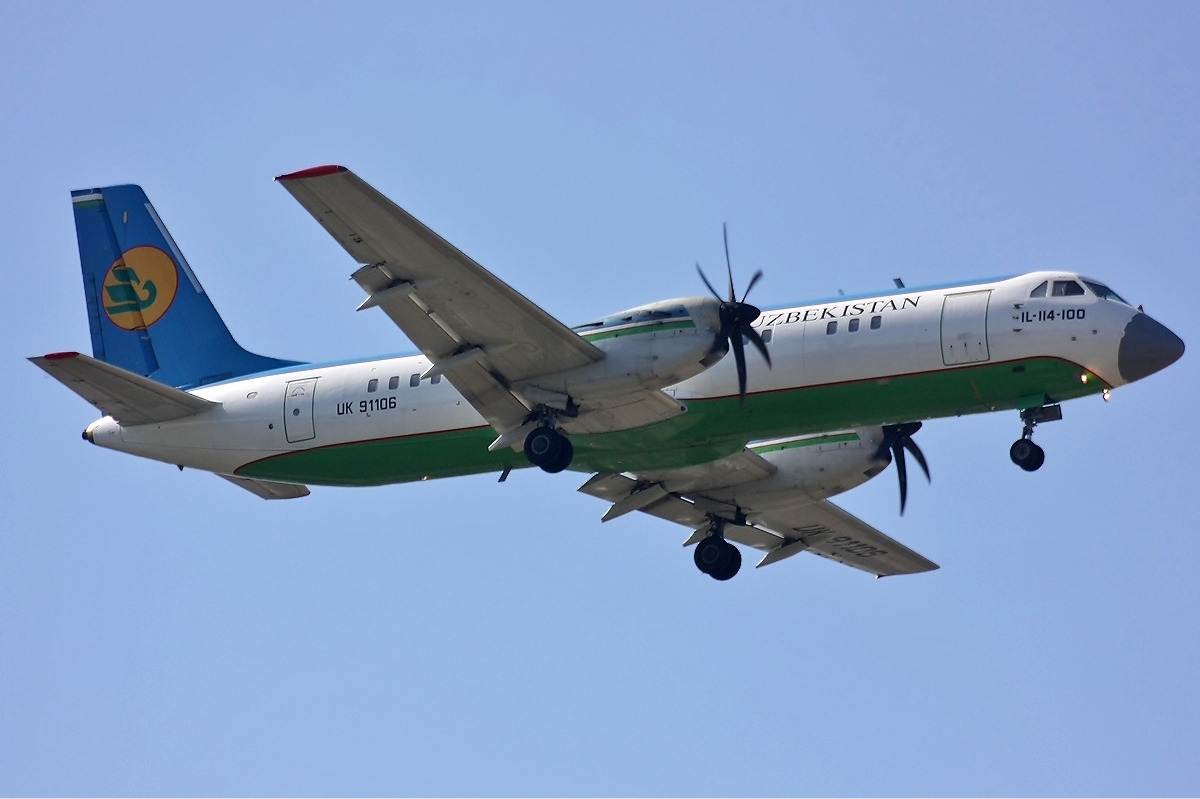|
Muynak Airport
Muynak Airport (; ) is an airport located in the city of Moynak, Karakalpakstan, Uzbekistan. It is considered as small type airport in terms of its capacity to transport passengers. History The airfield "Muynak" as 3rd class airport, was able to take the An-24, Yak-40 and additional light aircraft, as well as helicopters and so on. From the 1960s to the early 1990s, an An-2 aircraft link was based at the aerodrome; up to 19 passenger flights were made on local air lines (in particular, to Kungrad, Nukus, Urgench, Takhtakupyr, Kazakhdarya, Aspantay, Tuley) points. Since the 1990s, it has been used as a landing platform for aerial work (in particular, for agrochemical measures to combat locust foci in the southern Aral Sea region). Airlines and destinations See also * Tashkent International Airport * Termez Airport * Bukhara International Airport Bukhara International Airport is an airport serving Bukhara, the capital city of the Bukhara Region in Uzbekistan. F ... [...More Info...] [...Related Items...] OR: [Wikipedia] [Google] [Baidu] |
Moʻynoq
Moynaq, also spelled as Muynak (; ; ), is a city in northern Karakalpakstan, an autonomous republic in Uzbekistan. It is the seat of the Moʻynoq District, Moynaq district. Formerly a sea port on the Aral Sea, it is now 150 km from the water in the Aralkum Desert and thus is a disaster tourism destination. It is also the location for the biggest electronic music festival in Central Asia. History Once a bustling fishing community and Uzbekistan's only port, port city with tens of thousands of residents, Moynaq is now dozens of kilometers from the rapidly receding shoreline of the Aral Sea. Fishing had always been part of the economy of the region, and Moynaq became a center of industrial fishing and canning. However, a 1960s Soviet government diversion of the Amu Darya and Syr Darya rivers sapped the Aral Sea of its inflows, causing much of the lake to dry up and thus leaving the area susceptible to economic collapse. The regional Soviet-led agricultural monoculture dominat ... [...More Info...] [...Related Items...] OR: [Wikipedia] [Google] [Baidu] |
Termez Airport
Termez International Airport is an airport serving Termez, a city in southern Uzbekistan. It was used as a base for German Air Force C-160 "Transalls" which were part of the German ISAF-contingent. Airlines and destinations See also *List of the busiest airports in the former USSR *Transportation in Uzbekistan As of 2007, Uzbekistan's overland transportation infrastructure declined significantly in the post-Soviet era due to low investment and poor maintenance. Air transport was the only branch that received substantial government investment in the ear ... References External links * * Airports in Uzbekistan Surxondaryo Region {{Uzbekistan-airport-stub ... [...More Info...] [...Related Items...] OR: [Wikipedia] [Google] [Baidu] |
Tashkent International Airport
Islam Karimov Tashkent International Airport () is the main and the busiest international airport in Uzbekistan and the second busiest airport in Central Asia (after Almaty International Airport in Kazakhstan) as well as List of the busiest airports in the former Soviet Union, the 8th busiest in the Post-Soviet states. It is located from the center of Tashkent. It was named after Islam Karimov, the first president of independent Uzbekistan, in office from 1991 until his death in 2016. History The history of Tashkent Airport dates back to the early 20th century. On May 12, 1924, the first passenger flight was completed on a Junkers R-13 aircraft along the Tashkent–Pishpek–Almaty route. On August 8, 1930, the first airlift connected Moscow with Tashkent. The first Moscow-Tashkent-Moscow flight was operated on a K-4 aircraft. During the Soviet era, the airport evolved into a major transport hub. In 1957, the Tu-104 jet aircraft began operating on the Moscow-Tashkent-Mos ... [...More Info...] [...Related Items...] OR: [Wikipedia] [Google] [Baidu] |
Uzbekistan Airways
Open joint stock company, JSC Uzbekistan Airways, operating as ''Uzbekistan Airways'' (, ; ), is the flag carrier of Uzbekistan, headquartered in Tashkent. From its Airline hub, hub at Islam Karimov Tashkent International Airport, the airline serves a number of domestic destinations; the company also flies international services to Asia, Europe and North America. History Following the dissolution of the Soviet Union, Uzbek President Islam Karimov in 1992 authorised the creation of Uzbekistan Airways. The airline was established on 28 January 1992, and took over the operations of the Uzbekistan division of Aeroflot on 31 May 1992. In 1993, Uzbekistan Airways acquired its first two Airbus A310-300s. The two A310s were counted as part of the fleet , along with Ukrainian and Russian-built aircraft (25 Antonov An-26, Antonov An-24/26s, one Ilyushin Il-62, 13 Ilyushin Il-76s, one Ilyushin Il-86, 23 Tupolev Tu-154 and three Yakovlev Yak-40s). By this time, the airline was still the s ... [...More Info...] [...Related Items...] OR: [Wikipedia] [Google] [Baidu] |
Nukus Airport
Nukus Airport ( / ; / ) is an airport serving Nukus, the capital city of Karakalpakstan, an autonomous republic within Uzbekistan. The airport services more than twenty passenger flights to other cities in Uzbekistan and CIS weekly. During the Soviet period, it was home to a separate aviation test squadron supporting chemical weapons development, which flew flights to Zhaslyk airfield adjoining the Zhaslyk chemical weapons site. Facilities The airport resides at an elevation of above mean sea level. It has two runway In aviation, a runway is an elongated, rectangular surface designed for the landing and takeoff of an aircraft. Runways may be a human-made surface (often asphalt concrete, asphalt, concrete, or a mixture of both) or a natural surface (sod, ...s, 15/33 measuring and 07/25 measuring . Airlines and destinations See also * Transportation in Uzbekistan References External links * * Airports in Uzbekistan Nukus Military installations in the ... [...More Info...] [...Related Items...] OR: [Wikipedia] [Google] [Baidu] |
Silk Avia
Silk Avia LCC, better known as Silk Avia or Silkavia, is a regional airline based in Uzbekistan with its Airline hub, hub at Tashkent International Airport. The airline was established as a low-cost carrier and is a partner of Uzbekistan Airways. Silk Avia is owned by Uzbekistan Helicopters. Currently, Silk Avia operates flights to 15 destinations, with plans to expand its network to 40 destinations. Silk Avia has adopted the IATA and ICAO codes of "US" and "USA". History Silk Avia was founded on July 6, 2021, under the initiative of Uzbekistan's Ministry of Transport. The goal was to promote domestic tourism and business activities. The airline's establishment was officially announced in November 2021 at the Dubai Airshow. Silk Avia became the first operator of ATR 72 aircraft in Central Asia. Initially, the airline began operations with three aircraft previously operated by Bangkok Airways. On March 18, 2023, its first aircraft departed from Bangkok and arrived in Tashkent on ... [...More Info...] [...Related Items...] OR: [Wikipedia] [Google] [Baidu] |
Aral Sea
The Aral Sea () was an endorheic lake lying between Kazakhstan to its north and Uzbekistan to its south, which began shrinking in the 1960s and had largely dried up into desert by the 2010s. It was in the Aktobe and Kyzylorda regions of Kazakhstan and the Karakalpakstan autonomous region of Uzbekistan. The name roughly translates from Mongolic and Turkic languages to "Sea of Islands", a reference to the large number of islands (over 1,100) that once dotted its waters. The Aral Sea drainage basin encompasses Uzbekistan and parts of Afghanistan, Iran, Kazakhstan, Kyrgyzstan, Tajikistan, and Turkmenistan. Formerly the third-largest lake in the world with an area of , the Aral Sea began shrinking in the 1960s after the rivers that fed it were diverted by Soviet irrigation projects. By 2007, it had declined to 10% of its original size, splitting into four lakes: the North Aral Sea, the eastern and western basins of the once far larger South Aral Sea, and the smaller intermediate ... [...More Info...] [...Related Items...] OR: [Wikipedia] [Google] [Baidu] |
Urgench
Urgench (//, ; ; ) is a district-level city in western Uzbekistan. It is the capital of Xorazm Region. The estimated population of Urgench in 2021 was 145,000, an increase from 139,100 in 1999. It lies on the Amu Darya River and the Shavat canal. The city is situated west of Bukhara across the Kyzylkum Desert. History The history of the city goes back to the second half of the 19th century. The city should not be confused with the similarly named city of Konye-Urgench (also known as "Old Urgench" or "Gurgench") in Turkmenistan. The city of Old Urgench was left after the Amu Darya river changed its course in the 16th century, leaving the old town without water. New Urgench was founded by Russians in the second half of the 19th century at the site of a little trade station of the Khanate of Khiva. Modern Urgench is a Soviet-style city with cotton motifs adorning many objects, from street lights to apartment houses. Of note is a monument to the twenty Komsomol members killed by ... [...More Info...] [...Related Items...] OR: [Wikipedia] [Google] [Baidu] |
Karakalpakstan
Karakalpakstan, officially the Republic of Karakalpakstan, is an autonomous republic and part of Uzbekistan. It spans the northwestern portion of Uzbekistan. Its capital is Nukus (' / ). Karakalpakstan has an area of , and has a population of about 2 million people. Its territory covers the classical land of Khwarazm, which in classical Persian literature was known as (). The name ''Karakalpakstan'' means "land of the Karakalpaks". Although most Karakalpaks reside in Uzbekistan, Karakalpak culture and language are closer to those of the Kazakhs and Nogais. History From about 500 BC to 500 AD, the region of what is now Karakalpakstan was a thriving agricultural area supported by extensive irrigation. It was strategically important territory and fiercely contested, as is seen by the more than 50 Desert castles of ancient Khorezm, Khorezm fortresses which were constructed here. The Karakalpaks, Karakalpak people, who used to be nomadic herders and fishers, were first recorded ... [...More Info...] [...Related Items...] OR: [Wikipedia] [Google] [Baidu] |
Nukus
Nukus ( / / ; / / ) is the sixth-largest city in Uzbekistan and the capital of the autonomous Republic of Karakalpakstan. The population of Nukus as of 1 January 2022 was 329,100. The Amu Darya river passes west of the city. Administratively, Nukus is a district-level city, that includes the urban-type settlement Karatau. The city is best known for its Nukus Museum of Art. History The name Nukus comes from the old tribal name of the Karakalpaks, Nukus (in Persian: Nūkās, "New Kath"). Nukus developed from a small settlement in 1932 into a large, modern Soviet city with broad avenues and big public buildings by the 1950s. The city's isolation made it host to the Red Army's Chemical Research Institute, a major research and testing center for chemical weapons. In 2002 the United States Department of Defense dismantled the Chemical Research Institute, the major research and testing site for the Novichok agent, under a $6 million Cooperative Threat Reduction program. Tur ... [...More Info...] [...Related Items...] OR: [Wikipedia] [Google] [Baidu] |





